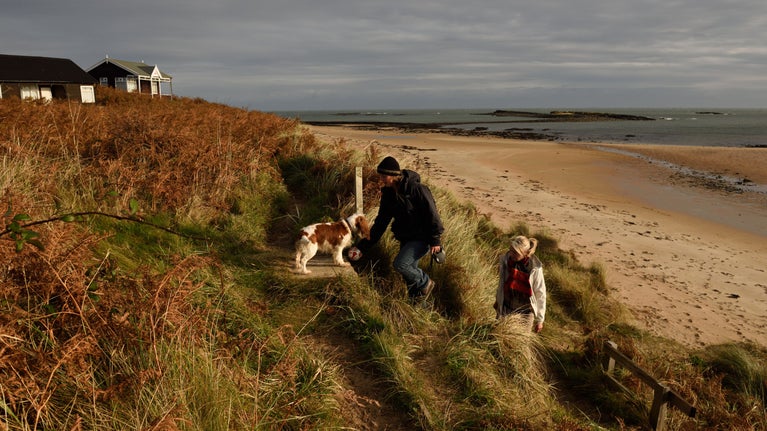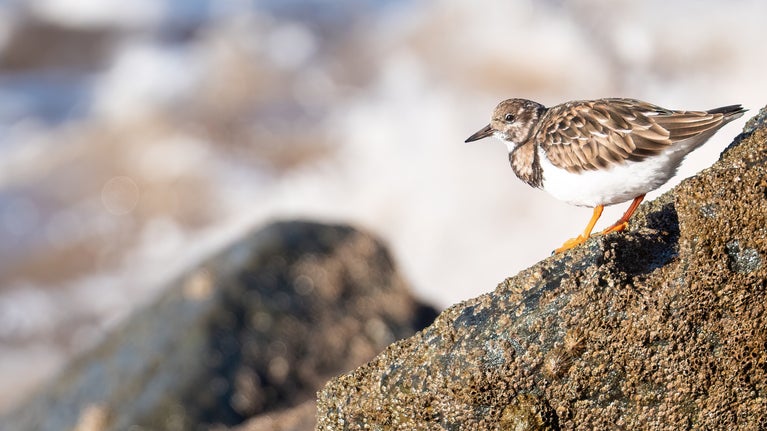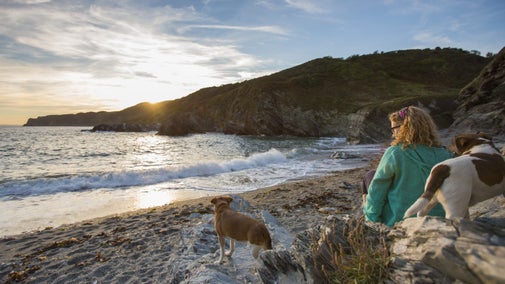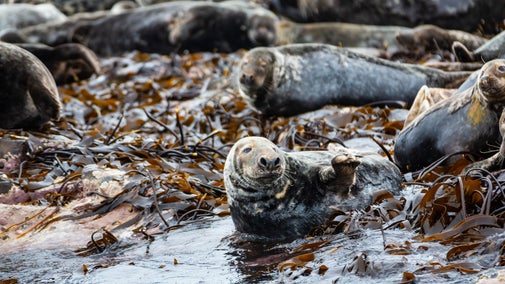
Discover more at Embleton and Newton Links
Find out how to get to Embleton and Newton Links, where to park, the things to see and do and more.

With beaches, coastal trails and bountiful wildlife, there’s plenty to keep you occupied on a day out on the Northumberland Coast. Bring your binoculars for some birdwatching in one of the dedicated hides in the area, then stroll through Long Newton and imagine the life of the fishermen who once lived here. Alternatively, let the sea breeze help you fly a kite on the beach, hunt for shells or build sandcastles.
Between the months of May - July, there is a very special spot on the Northumberland Coast - the Long Nanny shorebird site. Every year, around 2000 Arctic terns, and a handful of very rare little terns return here to breed. The site is also important for nesting Ringed Plover. Rangers camp here 24 hours a day to protect and monitor the birds. Find us half way between High Newton and Beadnell - please follow all local signage, keep dogs on a short lead near the roped area, and do come and visit - look for the rangers hut in the dunes, where you can find out more and watch the spectacle from the viewing platform.
Spend a day on the stretch of coast between Embleton and Low Newton. With the backdrop of Dunstanburgh Castle, this fine sandy beach is one of the most spectacular in England. It offers some good surf conditions and is a perfect spot to fly a kite and look for sea creatures in rock pools.
For a picturesque village wander, head to the 18th-century fishing hamlet of Low Newton, with its whitewashed cottages and historic pub set around a pretty village green.
A walk along the Northumberland Coast is a pleasure at any time of year, with fresh air and views that stretch for miles.
For a shorter saunter, take the Newton Pool coastal walk. Starting in Low Newton, this mile-long circular walk passes wildlife hides and has views over to Dunstanburgh Castle. Crime writer Val McDermid has chosen it as her favourite walk in the country – why not follow in her footsteps?
Alternatively, join the Craster to Low Newton coastal walk. At almost eight miles, the trail takes you through fishing villages, beside sheltered rock pools and past volcanic geological features.
Or perhaps a wander along the beach at Druridge Bay or St Aidans at Seahouses?

There are lots of ways to have fun and make memories with your family on the Northumberland coast. From beach activity days and rock-pooling with the rangers, to boat trips and wildlife spotting, an outdoor adventure is guaranteed.
You could also fly a kite, swim in the sea or try another of the coastal-based items on the National Trust's ‘50 things to do before you're 11¾’ activity list.
See the whole '50 things' list here.
The area around Embleton and Newton Links is a haven for seabirds, shorebirds and wildfowl, and there’s a good chance of discovering sea-loving critters in rock pools along the shoreline.
Low Newton has a natural rock harbour and golden beach sheltered from the tides by an offshore reef. It’s an excellent place to look for marine wildlife and feeding shorebirds.
Newton Pool is a freshwater lagoon nature reserve just 87 yards (80 metres) from the shore. It attracts a variety of wildlife to its scrub woodland, fen and open-water habitats. Follow the all-ability path behind the village square to visit an easily accessible bird-viewing hide.


Find out how to get to Embleton and Newton Links, where to park, the things to see and do and more.
Discover the 890 miles of beautiful coastline in our care. Plan your next coastal adventure, whether you want to explore soft, sandy beaches or rugged, windswept cliffs.

Try out the ‘50 things to do before you’re 11¾’ activities children can enjoy by the sea, from paddling or swimming, to catching crabs and skimming stones.

While canoeing and kayaking are great ways to experience nature and keep fit, they can be dangerous if you don't follow the guidelines. Learn how to stay safe with our advice and guidance.

Dogs can really stretch their legs on the long sandy beaches of the Northumberland Coast. Find out what facilities are available, where you can walk your dog and seasonal restrictions.

Discover some of the tasks that keep National Trust staff and volunteers busy throughout the year as they work to preserve Embleton and Newton Links for visitors and wildlife.

National Nature Reserve (NNR) and Site of Special Scientific Interest ( SSSI). Home to an internationally significant breeding colony of seabirds and Atlantic grey seals.
